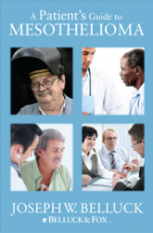
PHOTOFRIN’s Phase 3 Trial Will Be Watched by Mesothelioma Community
 A drug developed to treat bile duct cancer, a rare disease that strikes 2,000 – 3,000 Americans each year, will be closely watched by the mesothelioma community as it enters Phase 3 trials in several countries, including the U.S.
A drug developed to treat bile duct cancer, a rare disease that strikes 2,000 – 3,000 Americans each year, will be closely watched by the mesothelioma community as it enters Phase 3 trials in several countries, including the U.S.
Phase 3 trials enroll more patient volunteers than in Phase 2, where an experimental drug is tested on a small group of patients with specific diagnoses. In Phase 3, investigators can see how the drug performs among larger and more diverse patient groups. They might also look at different dosages and see how the drug works in combination with other treatments.
PHOTOFRIN® was developed by Pinnacle Biologics, a subsidiary of the Ontario, Canada firm Concordia Healthcare Corp. For Phase 3, it will be tested on 200 patients in Canada, the U.S., Germany, Switzerland, and South Korea, according to the company’s press release announcing the trial.
Patient screenings have begun at the University Medical Center Mannheim at Heidelberg University in Germany, which began the trial on October 7. About 900 Germans are diagnosed with bile duct cancer each year.
Thomas Jefferson University Hospital in Philadelphia was selected in August as the first U.S. trial site for the drug.
Pinnacle CEO, Oncologist See Mesothelioma Application
Like many drugs developed to treat rare, or orphan, diseases, PHOTOFRIN’s developers hope it will eventually treat other rare diseases, including mesothelioma. The drug was granted Orphan Drug Designation as adjuvant therapy to surgery in the treatment of malignant pleural mesothelioma by the U.S. Food and Drug Administration in December 2011.
Treatment with PHOTOFRIN is a two-step process. The drug is injected directly into the patient’s bloodstream, where it finds cancer cells and gathers inside them. It is activated two days later by a laser light to attack cancer cells in nearby tissue, a process called photodynamic therapy or PDT.
PHOTOFRIN also shrinks or kills malignant (cancerous) tumors by striking at their blood vessels and blocking nutrients they need to be sustained. It is also thought to activate the immune system to fight tumor cells.
Dr. Sebastian Belle, an oncologist and senior endoscopist at Pinnacle, agrees that PHOTOFRIN could be useful in treating other rare diseases. “We hope the trial will provide important new information to guide development of this targeted cancer therapy for patients with uncommon cancers,” he said in the press release.
PHOTOFRIN with PDT Already Approved for Chest Cancers
PHOTOFRIN is already approved to treat less common cancers, including endobronchial and esophageal cancers. It is also approved to treat high-grade dysplasia in patients with Barrett’s Esophagus who have not had any part of the esophagus surgically removed.
Most cases of mesothelioma appear in the linings around one or both lungs. It is also found in the linings around the abdominal organs. In very few patients, the heart lining is also affected.
In Canada, PHOTOFRIN is approved to treat lung, gastrointestinal, and bladder cancers. Concordia distributes it through Orphan Canada, a specialty drug company that in-licenses treatments for rare diseases. In-licensing is one way to speed up clinical trials and sales by sharing a license with a company that has an immediate use for it.

 Mike is a licensed attorney and the former editor of North Carolina Lawyers Weekly and South Carolina Lawyers Weekly. He has contributed numerous articles to the North Carolina State Bar Journal and is a co-author of Capital Lawyers, a history of the Wake County (NC) Bar.
Mike is a licensed attorney and the former editor of North Carolina Lawyers Weekly and South Carolina Lawyers Weekly. He has contributed numerous articles to the North Carolina State Bar Journal and is a co-author of Capital Lawyers, a history of the Wake County (NC) Bar.
 Gregory Froom is a licensed North Carolina attorney and the former editor of North Carolina Lawyers Weekly and South Carolina Lawyers Weekly.
Gregory Froom is a licensed North Carolina attorney and the former editor of North Carolina Lawyers Weekly and South Carolina Lawyers Weekly.
Leave a Reply